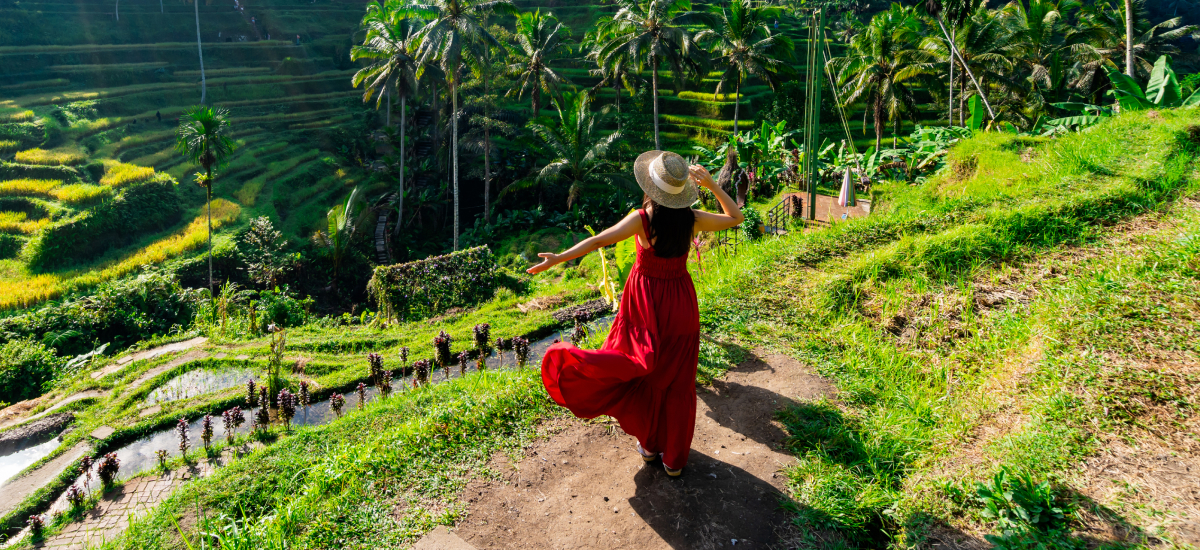Did you know? The 51 Shakti Peethas are believed to be formed from the scattered body parts of Goddess Sati, as per ancient Hindu mythology. These revered shrines are spread across the Indian subcontinent and continue to be centres of powerful spiritual energy. Each Peetha is associated with a body part of the goddess, a Bhairava (a form of Shiva), and a unique legend that shapes its sanctity.
These sacred spots attract millions of devotees and spiritual seekers year-round, acting as both spiritual destinations and symbols of divine feminine power.
The legend behind the Shakti Peethas
According to Hindu mythology, when Goddess Sati sacrificed herself at her father Daksha's yagna, Lord Shiva, overwhelmed with grief, carried her body and performed the Tandava. To pacify him and save the universe from destruction, Lord Vishnu used his Sudarshan Chakra to dismember Sati's body. The pieces fell at various places, which became known as the Shakti Peethas. Each site is associated with a specific body part of the Goddess and is accompanied by a Bhairava shrine, representing Lord Shiva.
A sacred trail: Complete 51 Shakti Peeth List with locations
Each Shakti Peetha is not just a temple—it is a place charged with spiritual energy. Let’s explore the 51 Shakti Peeth list along with their locations and divine associations:
No.
|
Shakti Peeth Name
|
Place
|
Body Part
|
1
|
Amarnath
|
Jammu & Kashmir
|
Throat
|
2
|
Katyayani
|
Mathura, Uttar Pradesh
|
Hair
|
3
|
Vishalakshi
|
Varanasi, Uttar Pradesh
|
Earrings
|
4
|
Lalita
|
Allahabad, Uttar Pradesh
|
Fingers
|
5
|
Jwala Devi
|
Kangra, Himachal Pradesh
|
Tongue
|
6
|
Tripurmalini
|
Jalandhar, Punjab
|
Left Breast
|
7
|
Savitri
|
Kurukshetra, Haryana
|
Right Ankle
|
8
|
Magadha
|
Patna, Bihar
|
Right side of body
|
9
|
Dakshayani
|
Burang, Tibet
|
Right Palm
|
10
|
Mahishasuramardini
|
Kolhapur, Maharashtra
|
Third Eye
|
11
|
Bhramari
|
Nashik, Maharashtra
|
Chin
|
12
|
Ambaji
|
Ambaji, Gujarat
|
Heart
|
13
|
Gayatri
|
Pushkar, Rajasthan
|
Wrist
|
14
|
Ambika
|
Bharatpur, Rajasthan
|
Left foot
|
15
|
Sarvashail
|
East Godavari, Andhra Pradesh
|
Left cheek
|
16
|
Sravani
|
Kanyakumari, Tamil Nadu
|
Back and spine
|
17
|
Bhramaramba
|
Kurnool, Andhra Pradesh
|
Right Anklet
|
18
|
Narayani
|
Kanyakumari, Tamil Nadu
|
Upper Teeth
|
19
|
Phullara
|
West Bengal
|
Lower Lip
|
20
|
Bahula
|
West Bengal
|
Left Arm
|
21
|
Mahishmardini
|
Birbhum, West Bengal
|
Portion of the head between the eyebrows
|
22
|
Dakshina Kali
|
Kolkata, West Bengal
|
Right Toes
|
23
|
Devgarbha
|
Birbhum, West Bengal
|
Bone
|
24
|
Vimla
|
Murshidabad, West Bengal
|
Crown
|
25
|
Kumari Shakti
|
Hooghly, West Bengal
|
Right Shoulder
|
26
|
Bhramri
|
Jalpaiguri, West Bengal
|
Left leg
|
27
|
Nandini
|
Birbhum, West Bengal
|
Necklace
|
28
|
Mangal Chandika
|
Purba Bardhaman, West Bengal
|
Right Wrist
|
29
|
Kapalini
|
Purba Medinipur, West Bengal
|
Left Ankle
|
30
|
Khamakya
|
Guwahati, Assam
|
Yoni (Genitals)
|
31
|
Jayanti
|
West Jaintia Hills, Meghalaya
|
Left Thigh
|
32
|
Tripura Sundari
|
Gomati, Tripura
|
Right Foot
|
33
|
Biraja
|
Jajpur, Odisha
|
Navel
|
34
|
Jai Durga
|
Deoghar, Jharkhand
|
Ear
|
35
|
Avanti
|
Ujjain, Madhya Pradesh
|
Upper Lips/Elbow
|
36
|
Narmada
|
Amarkantak, Madhya Pradesh
|
Right Buttock
|
37
|
Nagapooshani
|
Northern Province, Sri Lanka
|
Anklets
|
38
|
Gandaki Chandi
|
Mustang, Nepal
|
Cheek
|
39
|
Mahashira
|
Kathmandu, Nepal
|
Hips
|
40
|
Hinglaj
|
Pakistan
|
Head
|
41
|
Sugandha
|
Barishal, Bangladesh
|
Nose
|
42
|
Aparna
|
Bogra, Bangladesh
|
Anklet/Ribs of left chest/Right eye
|
43
|
Jeshoreshwari
|
Khulna, Bangladesh
|
Palm
|
44
|
Bhavani
|
Chittagong, Bangladesh
|
Right Arm
|
45
|
Maha Lakshmi
|
Bangladesh
|
Neck
|
46
|
Sri Parvat
|
Ladakh, Kashmir
|
Right Anklet
|
47
|
Panch Sagar
|
Haridwar
|
Teeth (lower jaw)
|
48
|
Mithila
|
Nepal
|
Left Shoulder
|
49
|
Ratnavali
|
Chennai, Tamil Nadu
|
Right Shoulder
|
50
|
Kalmadhav
|
Annuppur, Madhya Pradesh
|
Left Buttock
|
51
|
Ramgiri
|
Chitrakuta
|
Right Breast
|
Each temple carries its distinct atmosphere. From the mystical fires of Jwalaji that never extinguish to the serene presence of Kamakhya on the Nilachal Hills—every site tells a timeless story.
Why are these sites so significant? The history of Shakti Peeth
The Shakti Peethas hold immense mythological and spiritual value. According to the Shiva Purana, when Sati immolated herself at Daksha’s yagna, a grieving Shiva carried her body across the universe. To pacify him and restore cosmic balance, Lord Vishnu used his Sudarshan Chakra to dismember her body, and the pieces fell at various places—forming the Shakti Peethas. As described in the history of Shakti Peeth, each shrine thus embodies a distinct Shakti, and the accompanying Bhairava guards the divine energy. Pilgrims believe that visiting these sites can cleanse one’s soul, remove obstacles, and awaken the spiritual self.
Secure your pilgrimage with travel insurance
Whether you’re visiting one shrine or completing the 51 Shakti Peeth list, unexpected issues can crop up—trip cancellations, medical emergencies, or loss of baggage. That’s where travel insurance becomes your spiritual companion.
Here’s why it matters:
· Medical Emergencies: Many Peethas are in high-altitude or rural regions. Insurance ensures cashless treatment or reimbursements in case of illness or injury.
· Trip Interruptions: If your journey is cut short due to unforeseen reasons, a policy can cover non-refundable expenses.
· Baggage Loss/Theft: You’re often carrying important documents and valuables. Insurance adds a layer of protection.
· Peace of Mind: When you're on a soul-searching journey, the last thing you want is travel stress.
Opt for a domestic travel insurance plan with Generali Central, offering 24x7 customer support, comprehensive coverage, and an easy claims process.
Final words
The journey to the 51 Shakti Peethas is not just a travel itinerary—it’s a spiritual awakening. From the snow-covered peaks of Himachal to the serene plains of Tamil Nadu, each site tells the tale of divine resilience, power, and faith.
Make this once-in-a-lifetime spiritual expedition smoother, safer, and stress-free. Choose travel insurance that walks with you on every sacred mile. Planning your pilgrimage? Choose Generali Central to ensure that your pilgrimage across the Shakti Peeth list is both enriching and secure.
FAQs
Q1. Are all 51 Shakti Peethas located in India?
Not all. While most are in India, a few are in neighbouring countries like Pakistan (Hinglaj), Bangladesh (Jessoreswari), Nepal (Guhyeshwari), and Sri Lanka (Shankari).
Q2. Do I need special permits to visit any Shakti Peetha?
Some temples, especially in border or forest areas, may require entry permits. Check local tourism websites or temple boards before planning your visit.
Q3. Are there any recommended times to visit the Peethas?
While most are open year-round, visiting during Navratri or Durga Puja can be especially spiritual—but also crowded. Winters are ideal for hilly shrines.
Q4. Is there a fixed order to visit the Shakti Peethas?
There’s no mandated sequence. Devotees often start with the Peetha closest to them or one that holds personal spiritual importance.
Q5. Can I get travel insurance for a domestic religious trip?
Yes. Travel insurance isn’t just for international trips. Generali Central’s domestic travel plans can protect you during temple visits, yatra tours, and spiritual circuits.






















